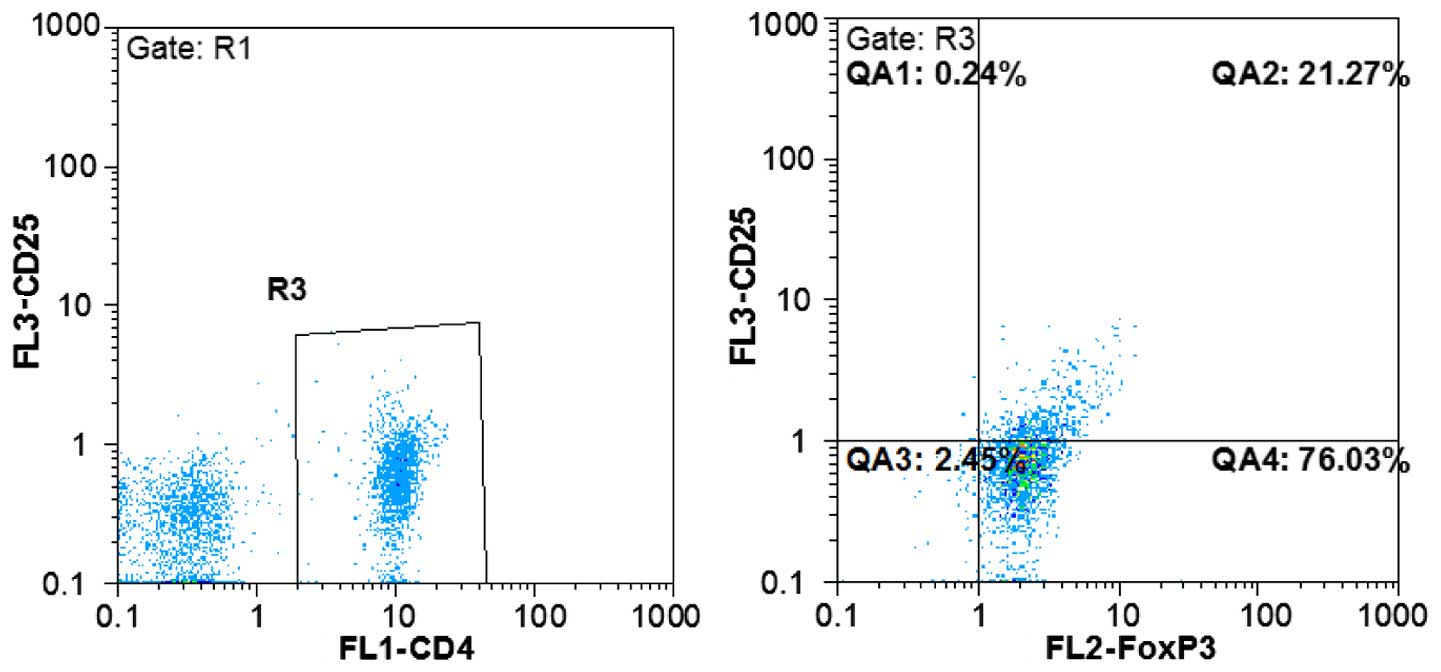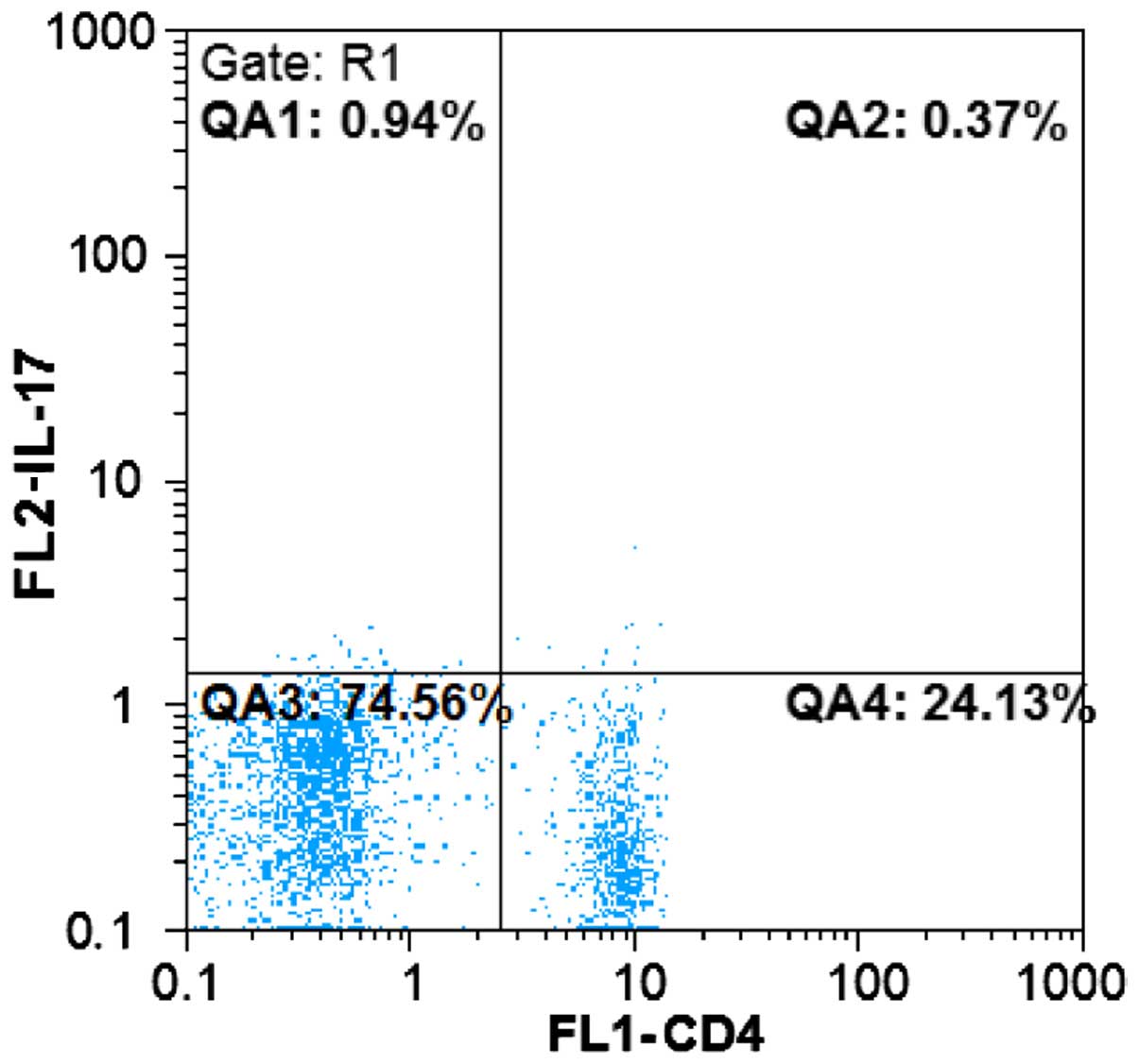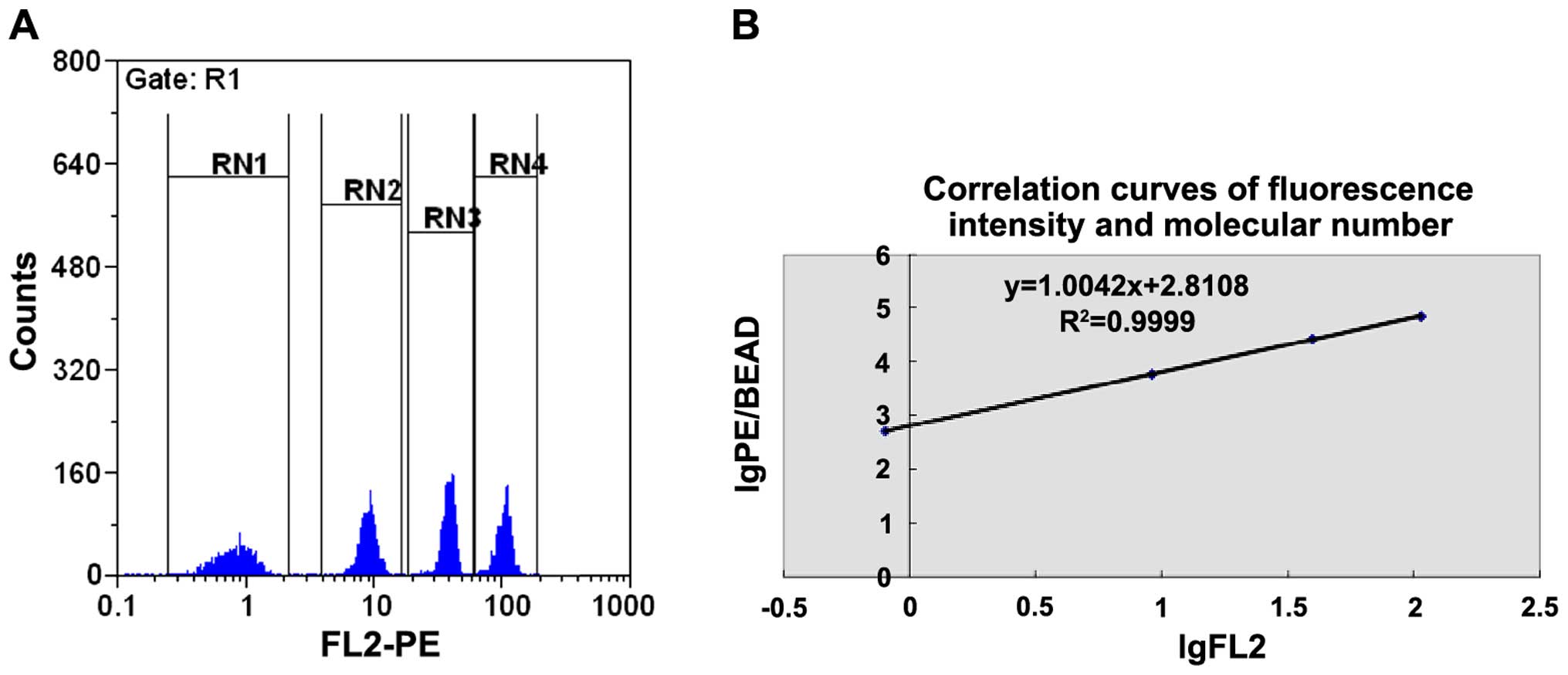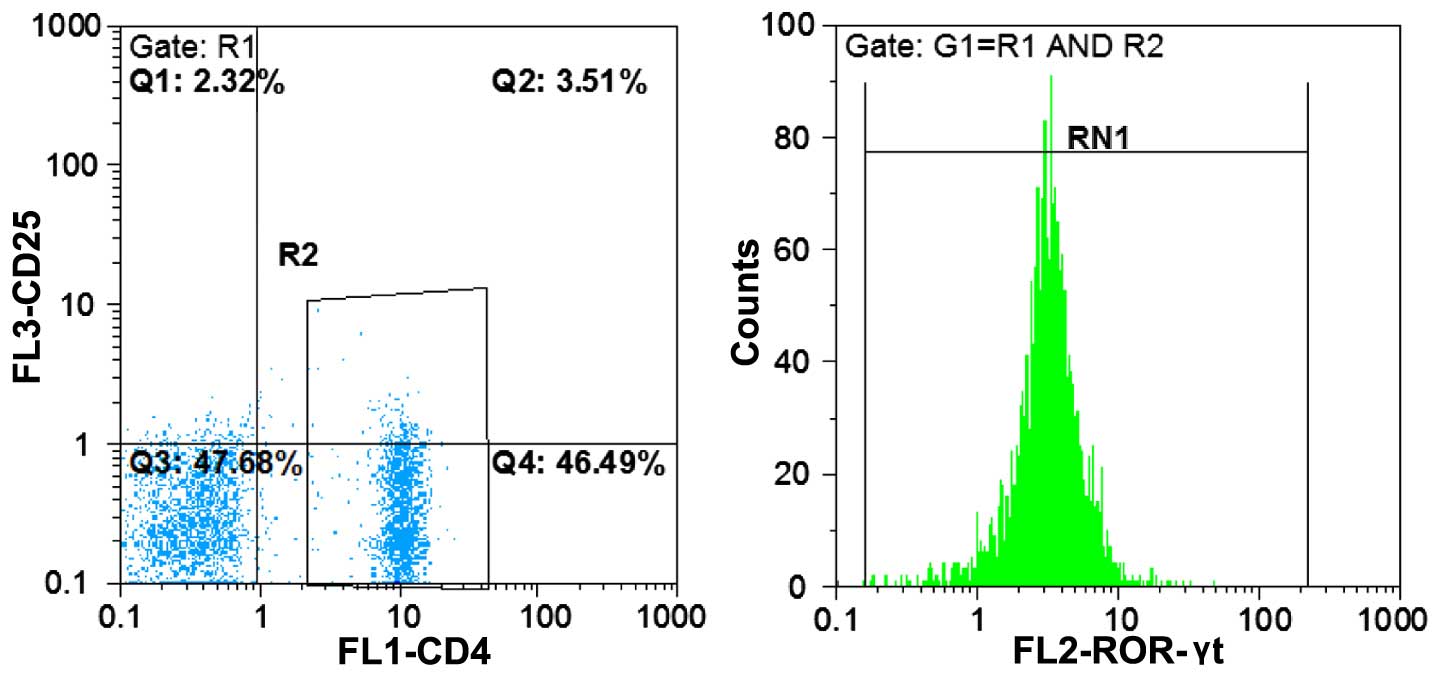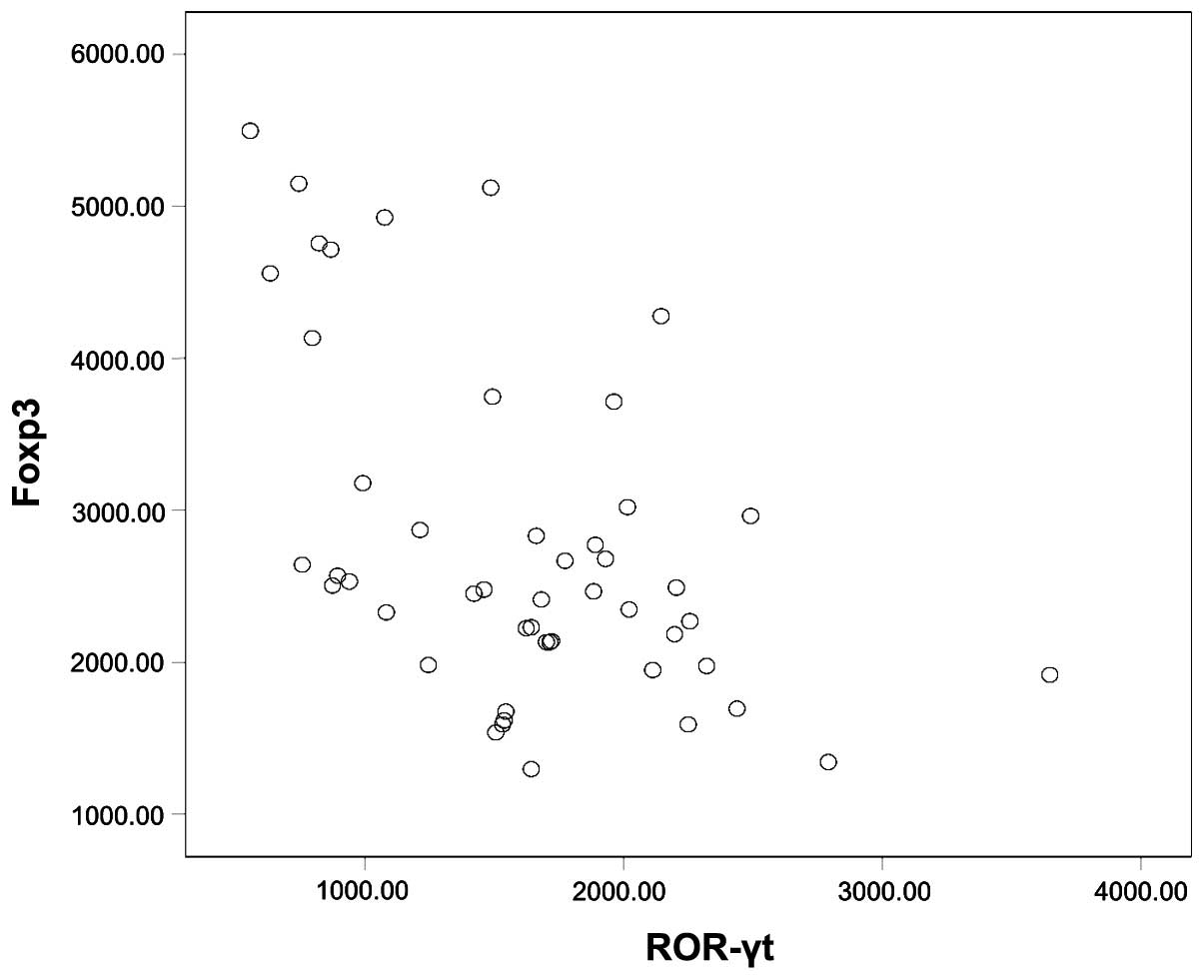Equilibrium of Treg/Th17 cells of peripheral blood in syphilitic patients with sero-resistance
- Authors:
- Published online on: March 23, 2016 https://doi.org/10.3892/etm.2016.3178
- Pages: 2300-2304
-
Copyright: © Zhao et al. This is an open access article distributed under the terms of Creative Commons Attribution License.
Metrics:
Total
Views: 0 (Spandidos Publications: | PMC Statistics:
)
Total PDF Downloads: 0 (Spandidos Publications: | PMC Statistics:
)
Abstract
The aim of the present study was to examine changes of cellular homeostasis in regulatory T (Treg) and T helper 17 (Th17) cells by detecting the proportion of Treg and Th17 cells of peripheral blood, as well as the expression of specific transcription factors in these two types of cells, in syphilitic patients with sero‑resistance. A total of 49 subjects were enrolled in the study and divided into two groups, comprising 26 cases of sero‑resistant syphilitic patients in the experimental group, and 23 cases of healthy donors in the normal control group. Flow cytometry was applied to examine the proportion of Treg and Th17 cells, as well as the quantitative expression of relevant specific transcription factors [forkhead box P3 (Foxp3) and retinoic acid-related orphan receptor γt (ROR‑γt)] in the two groups. A correlation analysis was subsequently performed. The results showed that in syphilitic patients with sero‑resistance, the proportion of peripheral blood Treg cells was obviously higher than that of the normal control group (p<0.01) and the proportion of Th17 cells was significantly lower than that of the normal control group (p<0.01). In addition, the expression of transcription factor Foxp3 in CD4+ T cells was higher than that of the normal control group, while the expression of ROR‑γt was lower than that of the normal control (p<0.05). The expression of Foxp3 and ROR‑γt in peripheral blood CD4+ T cells had a negative correlation (r=‑0.481, p<0.01). In conclusion, the peripheral blood of syphilitic patients with sero-resistance may have abnormalities in Treg/Th17 cellular balance.



